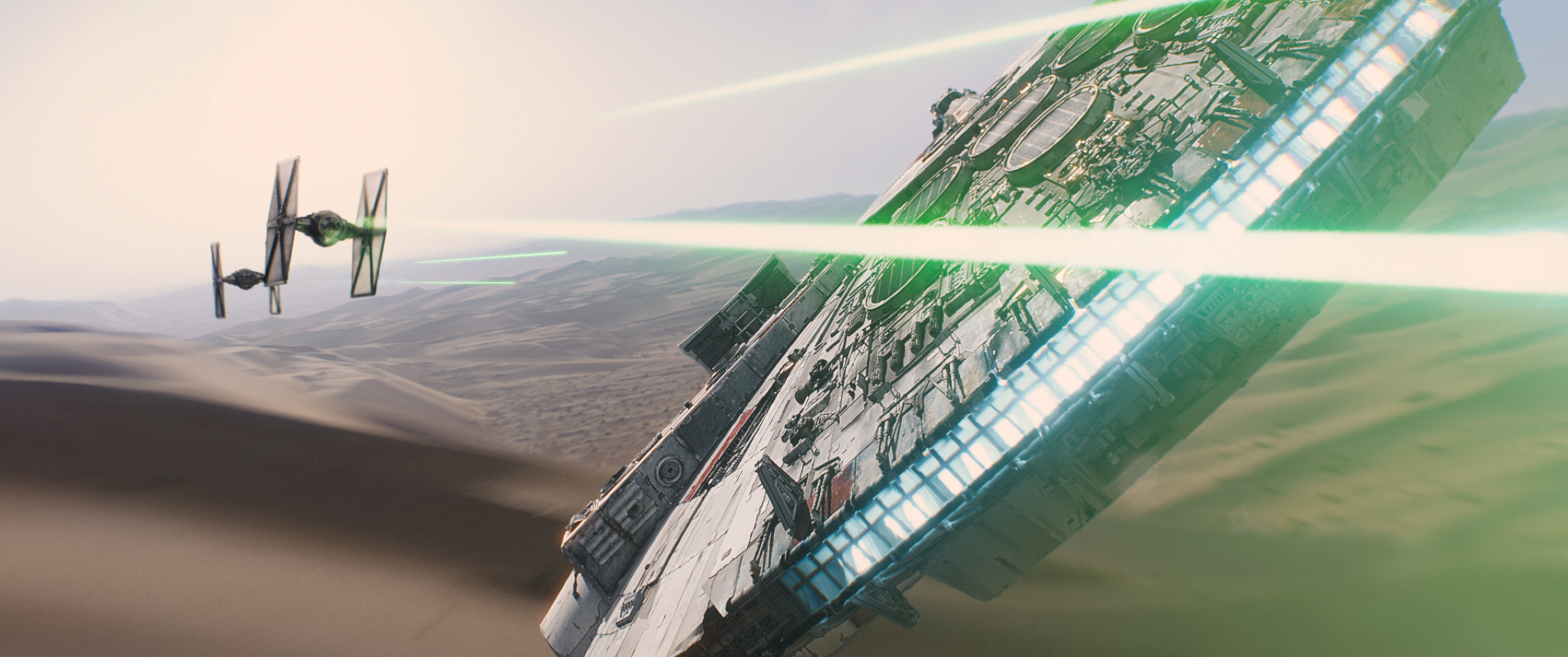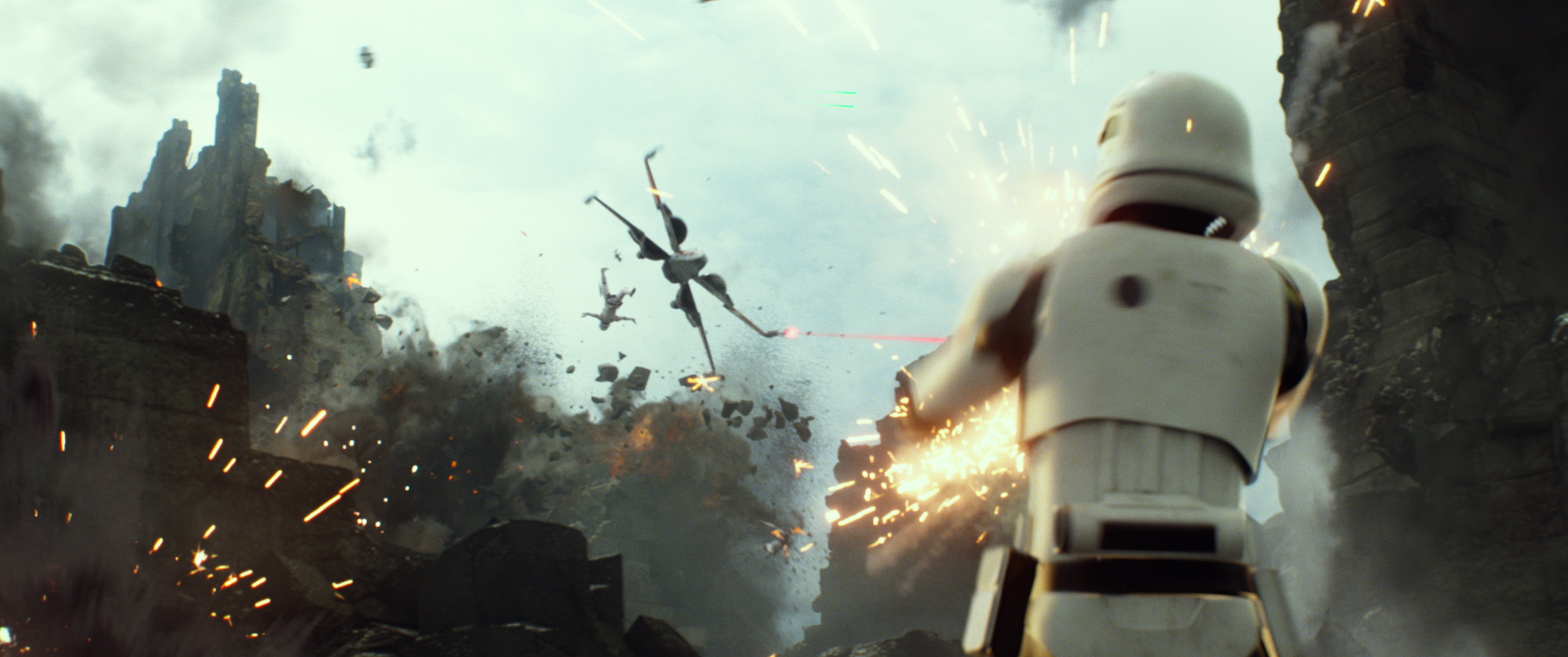Nearly two months ago, people across the world piled into movie theaters to finally get a look at J.J. Abrams’s take on bringing the Star Wars franchise back to the big screen after so many years. Aside from being an absolutely fantastic film that is essentially a giant love letter to the original trilogy of Star Wars and a brilliant return to the franchise going forward, The Force Awakens deserves a massive amount of respect for its’ gorgeous, stunning visuals that it showcases. Obviously as technology advances, the visuals in The Force Awakens are light years ahead of Star Wars, The Empire Strikes Back or The Return of the Jedi, but a lot of work went into making sure the new film represented the same kind of authenticity that made the originals such a visual marvel back in its time — a trilogy that even remains impressive even today.
From the very beginning of production, J.J. made it clear that he intended to make the film as authentic as possible. In an interview with Indiewire, The Force Awakens production designer Darren Gilford mentioned how “J.J.’s mandate from day one was authenticity and being as true to the original trilogy as possible.” He also goes on to say that “[J.J.] felt the prequels were flawed by the fact that they had every [C.G.] tool known to mankind and used everything at their disposal. I think J.J. wanted to reconnect with how the original films were made.”
Along with much of the film’s marketing pleasing hardcore fans left and right, Disney/Lucasfilm also heavily promoted the film as the return to practical effects for the Star Wars universe. It would mark an impressive and certainly welcome return to the visual effects of what makes Star Wars special and something the Star Wars prequels were arguably flawed by which was the lack of practical effects and characters. Rather than returning to the practical landscapes and puppet performances in his prequel trilogy, Lucas instead switched those elements in favor of CG-rendered creatures and locations. Though groundbreaking at the time of their respective releases, there was a large sense of realism that the prequels would sorely lack, which is always something I feel was personally a flaw of Lucas’s prequels as well as his edits in the Special Edition DVDs.
Earlier this year at 2015’s Comic-Con in San Diego, Lucasfilm shared a video reel showcasing the return to the real-life visuals and creatures in all their glory, which I included below for your viewing pleasure.
The reel showed off the actual landscapes and creatures being built for the movie, and even that a sequence in the film was shot on IMAX 70mm film, which is a blend of IMAX’s modern technology with the 70mm technology, hardly used in today’s modern cinema. Hardcore cinema lovers will know that whenever mega large films like Interstellar or The Hateful Eight are released in 70mm — it’s always a big deal. 70mm allows for a wider aspect ratio than the standard 35mm reel releases, bringing out a massive amount of gorgeous detail and visuals that the digital prints or 35mm don’t display. Due to the large costs of upkeeping the 70mm projectors and the expensive cost of filming on the 70mm film, the technique has slowly declined, making a film using 70mm a rarity, with few directors like Quentin Tarantino, or Christopher Nolan ready to take on the daunting task of filming their productions in the old-style technique. IMAX cameras, however, blend the 70mm format with an even further horizontal stretch which allows for an even larger immersive picture. This format was used for a single scene in the film — the “escape from Jakku” sequence — which is stunning, gorgeous and absolutely impressive.
All of these amazing blends of practical effects with the modern techniques make it feel like it’s 1977 all over again! I couldn’t help but be impressed with the massive amount of set building and the newly designed puppet characters and rebuilds this movie showcased. Aside from being a nice little tribute to the original trilogy, it was a stunning step forward in cinematic visual effects that rightfully earned itself an Academy Award nomination for its sense of realism.
However….
Despite myself and other “original trilogy” fans shouting in unison for the demise of CGI in the Lucas-created universe, I was shocked to find out just how much green screen and CG post-production this movie had. In an interview with Patrick Tubach of Industrial Light and Magic and visual effects supervisor Roger Guyett on Slashfilm.com, we find The Force Awakens surprisingly features far more green screen and CG than Lucas’s The Phantom Menace did. If that wasn’t enough of a shocker, Slashfilm later brings up an article focusing on the beautiful miniatures that went into making the Phantom Menace and also makes note that The Force Awakens did not include a single miniature set.
Obviously, CG is to be expected in a movie this grandeur, but for a movie marketed as a mega throwback to the franchise’s original form, it’s jaw-dropping to get an inside look at the amount of CG-heavy usage this movie relied on. There are entire sequences that are entirely CG-created, with no practical effects used, such as many of the Jakku sequences. Regardless, the end result is a gorgeous one, but one that many fans alike will be surprised to learn.
Then, of course, there’s the obvious use of CGI in the creation of newcomer Maz Kanata, played by Lupita N’yongo. The effects used to create her were a particularly popular motion capture technique, in which an actor would act out a scene and have their movements translated to a CG representation. With the design and characteristics of Maz already prepared off-screen, N’yongo’s performance would animate the character on another screen which would be recorded, with lighting, and color correction saved for post-production. This would be the first time motion capture is used in a Star Wars film and it certainly worked wonders.
Although Star Wars: The Force Awakens features a certainly surprising amount of green screen visuals, the studio and the VFX team at ILM did a brilliant job at paying homage to the original trilogy yet also pushing modern technology to new boundaries. While being true to what makes Star Wars special and keeping one foot in the past and one in the future, this movie blended two completely distinct styles to create an absolutely gorgeous masterpiece. Not only is The Force Awakens a great return to the Star Wars franchise and characters but it’s also a monumental precedent to the boundaries that visual effects in modern cinema are capable of accomplishing. For fans and filmmakers alike, Star Wars has truly returned.



